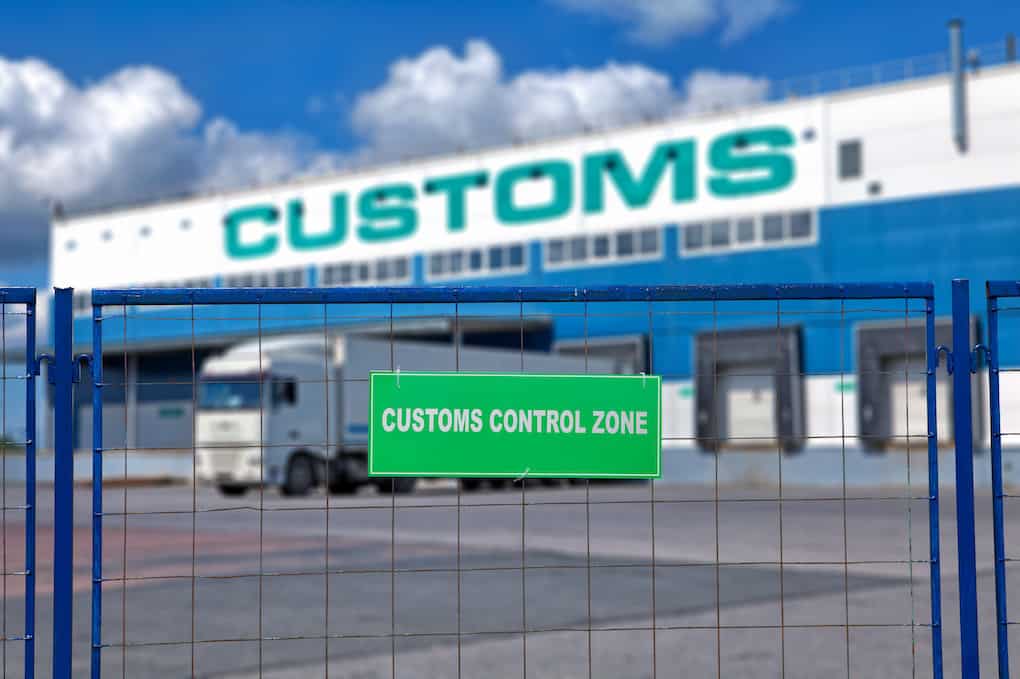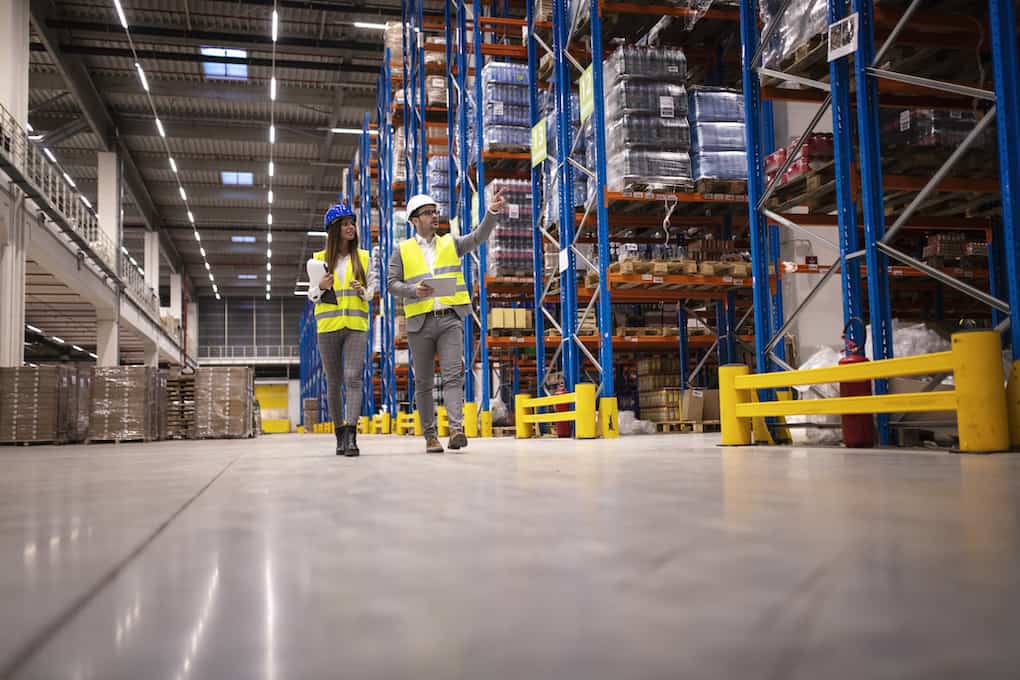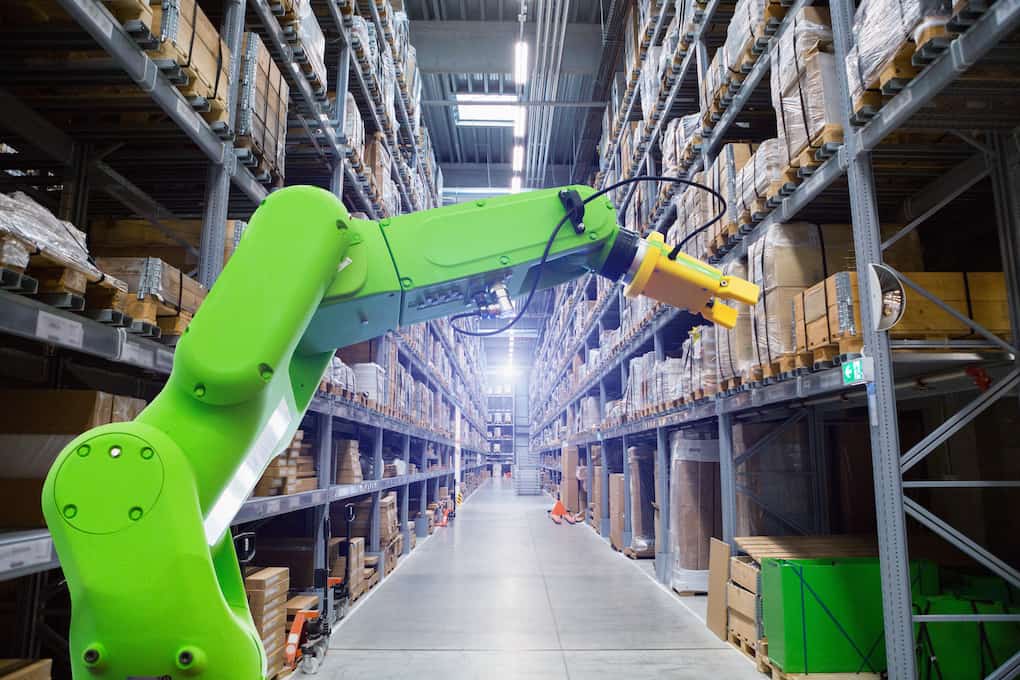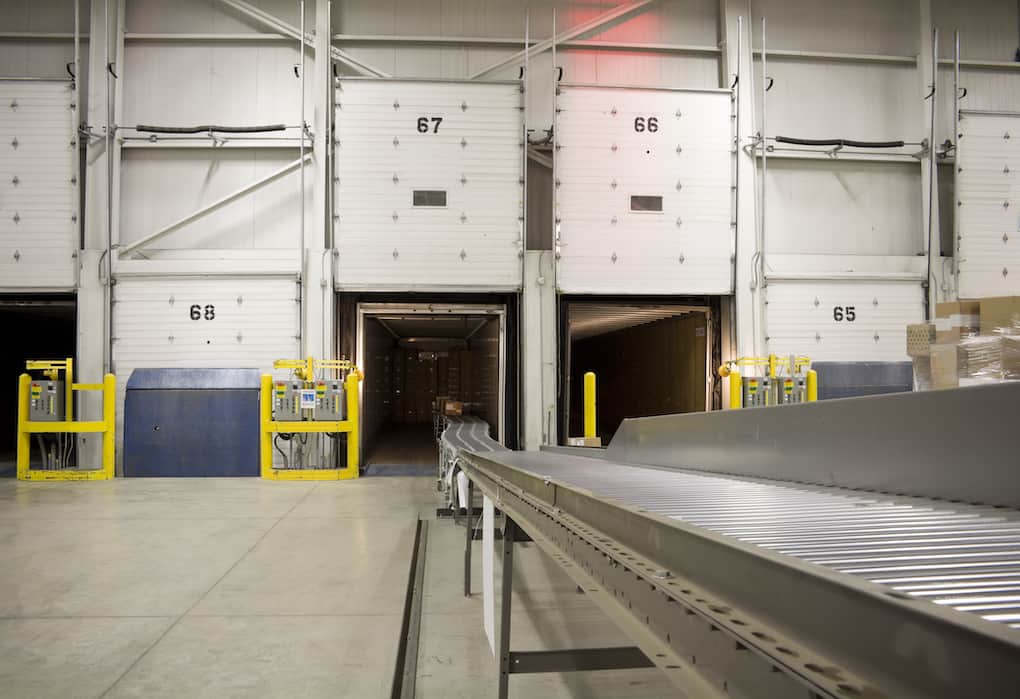1. Bonded or Customs Warehouse
Bonded warehouses are structures built to store imported products and goods that usually require duty payments. After a set period, the stored goods can leave the warehouse without the obligation of paying duties. It’s not only duties which these goods incur, but other charges and taxes involved in imports.
Bonded warehouses also go by the name of Customs warehouses. This naming is because these warehouses primarily serve as storage for products under Customs and Border Protection’s charge. Because Customs officials protect national borders, these warehouses are often close to borders, airports, and ports.
In Customs Warehouses, the proprietor who holds liability pays the duties upon release from the warehouse. However, liability no longer applies if the goods are exported or destroyed by Customs officials. In such cases, duties don’t apply.
✅ Pros
- Duty fees are exempt from any goods that don’t sell, so demand isn’t crucial to target
- Less financial strain for businesses storing goods for more prolonged periods
- Holds a variety of products
❌ Cons
- Passing Customs compliance can be complex
- It can be challenging to arrange international cargo

2. Public or On-Demand Warehouse
One of the best ways to reduce storage costs for small businesses is to own or lease space in a public warehouse. This warehouse type is widespread and growing year by year in the U.S.
Since public warehouses operate “on-demand” and owners depend on filling available space, pricing can be competitive. In addition, business owners often have options: some charge per pallet, others by square footage. Each on-demand warehouse has its own system.
How does the owner operate a public warehouse?
First, they operate in the form of monthly fees. Lessees regularly pay for the warehouse space, on-site staff, https://www.extensiv.com/extensiv-warehouse-managerinventory management software, and even shipping capabilities.
Also, public warehouses offer varying time limits for storage rights. Business owners can select monthly or yearly terms. That’s a big bonus for companies that need flexibility.
✅ Pros
- The owner, not the renter, has responsibility for building maintenance, staffing, etc.
- Flexible contracts encourage small businesses to use these spaces for their warehouse
- You don’t have to employ staff. It’s an all-in-one contract
❌ Cons
- Less control over climate, square footage, floor plan
- Monthly costs can pile up quickly

3. Government Warehouses
Government warehouses primarily store objects and goods belonging to national governments. But private individuals and business owners can often also rent space.
Government warehouses reserve the right to seize the goods of any renter who fails to pay rent. That means the government can freely examine and even sell the property of renters who default.
Still, the benefits of using government warehouses are pretty straightforward. Government property is generally well managed, clean, regulated, and sometimes climate-controlled. Staffing varies between facilities, but most warehouses are secure, fire-proof, and prepared for disaster.
✅ Pros
- Provides storage for schools, offices, and institutions
- Government oversight keeps warehouse management competent and well-trained
- Rental rates remain low with government regulation
❌ Cons
- Delinquent rental dues may result in property seizure
- Renters must comply with exacting governmental standards
- Limited to what can be stored legally on government property
4. Cold Storage or Temperature-Controlled Warehouse
If you’ve worked for a florist, high school cafeteria, or certain hospitals, then climate-controlled spaces are familiar to you. Temperature-controlled warehouses (AKA climate-controlled warehouses) are designed for products that require extra attention. Artworks, medicine, cosmetics, and candles also frequently appear here.
Not only do products line the shelves in temperature-controlled storage, but you’ll also find animals and other living organisms in these warehouse types. They attract businesses and cargo companies that ship food, flowers, fresh produce, and more.
Cold storage is an extreme type of these warehouse types. They specialize in deep freezing sensitive goods over long periods. If you need a solution for improving the shelf-life of inbound and outbound shipping, these warehouses are for you.
✅ Pros
- Caters to business owners with particular storage requirements
- Allows you to eliminate negative factors like heat and sun exposure
- Provides a dust-free environment perfect for computer parts
❌ Cons
- High cost compared to ordinary shipping warehouses
- It can be hard to find in remote areas of the country
5. Smart or Automated Warehouse
We see videos frequently on the news of warehouse hangers full of goods and activity without a human worker in sight. Robotics and technological innovations in automated storage and retrieval systems (also called AS/RS) have been central to this new vision of the warehouse.
Smart warehouses (or automated warehouses) are growing in popularity and attracting funds from tech investors day by day. They are primarily filled with low-emission automated tools, conveyor belts, sorting tools, and unmanned equipment.
Storage and retrieval from automated warehouses can be cost-prohibitive for some. Operating costs are high and often change as tech innovations replace legacy systems.
✅ Pros
- Almost unlimited potential for business owners looking to cut workforce costs
- Cutting-edge sorting, retrieval, and material-handling tools
- Minimal inventory count issues or production errors
❌ Cons
- High cost of entry
- Vulnerable to large scale blackouts or computer malfunctions

6. Distribution Centers
One of the final stages in the supply chain is distribution. Warehouse types explicitly built to make exchanges between inbound and outbound efficient are called distribution centers.
Distribution warehouses specialize in short-term goods storage. Owners prioritize short-term storage because they can increase turnover with each cargo reception and expedition. In many cases, goods stay in storage for less than a day. It is especially true in the food and flower industries, but any perishable item will do well in distribution centers.
Though storage space in a distribution center is at a premium, costs may be lower than expected. Prices are significantly lower with more extensive inventories. Owners can also keep rental rates down by accepting a wider variety of products into storage. Renters can chalk that advantage up as a win.
✅ Pros
- Widely available nationwide with competing warehouses in many metro areas
- Used explicitly for quick distribution, so outsourcing is efficient
- Accommodates a range of product types
❌ Cons
- Services and technology vary widely from center to center
7. Hazardous Materials (HAZMAT) Warehouse
Hazardous materials warehouses are closely related to climate-controlled warehouses. They both subscribe to high safety standards. They both cater to business owners who require trained staff and exact handling instructions.
However, hazardous materials warehouse types take those standards up a notch.
Otherwise called HAZMAT warehouses, these buildings follow government regulations on the handling of several materials, including:
- Gasses
- Explosives, weapons
- Radioactive Objects
- Viruses, bacteria, communicable diseases
- Any substance potentially harmful with minimal exposure
Investing in storage space at a HAZMAT warehouse comes with additional perks. Many times, owners employ expert staff trained in proper handling procedures. Workplace injuries rarely occur in these environments. Plus, they are often located far away from vulnerable populations and cities.
If high safety standards and dangerous material is your industry, HAZMAT warehouses are where substances travel.
For many who use these facilities, storage costs are a lesser concern. HAZMAT warehouses can be pricey for non-governmental or private small business owners. Why?
More space needs to surround each hazardous cargo. Facilities often employ 24/7 security and on-site fire defenses. Temperature and humidity control call for sophisticated equipment.
Constant surveillance demands a trained staff with HAZMAT handling training. And those are just a few reasons why HAZMAT facilities are so unique— and so foreboding.
8. Cross-Dock Warehouse
Cross-dock warehouse types specialize in transferring goods from inbound to outbound trucks and other transport. The process of cross-docking is, in itself, a complicated procedure. Essentially, these warehouses are middlemen between cargo carriers and their destinations.
In cross-dock warehouses, staff unloads, sorts, and reloads cargo from one truck to another. The result? Each carrier leaves the warehouse with a site-specific load which they can drop off all at once. Delivery costs drop, cargo-only passes through one warehouse, so it stays relatively undamaged, and inventory costs are lower because goods aren’t stored.
Without cross-docking warehouses, trucks would need to transport goods to several retail locations— locations that other trucks are simultaneously visiting, too. Warehouses employ expert staff who can sort extensive inventories in hours with the help of advanced technology.
✅ Pros
- Reduces transportation costs
- Relatively low storage time keeps cargo on the move
- Consolidated shipping lowers prices, eliminating the need for shipping partners
❌ Cons
- Only financially viable with more extensive inventories

9. Private Warehouses
Private warehouses are owned by distributors, manufacturers, or wholesalers. Some of the more established online and retail marketplaces will also oversee their own private warehouses.
Compared to public warehouses, private warehouses are more costly. However, private warehouses are an effective solution for small and medium-sized eCommerce businesses.
✅ Pros
- Fewer errors because it is managed by a small group of people
- Can be rented instead of purchased
- Can be designed to fit the needs of a specific company
- Performance improvements
- Viable option when public warehouses are unavailable
❌ Cons
- Return rates are low
- Less flexibility with operations
- Expensive to build from the ground up
10. Cooperative Warehouses
Cooperative warehouses are owned and operated by cooperative organizations like a winery or farmer co-op. All co-op members can house goods at these locations, including the people outside of the co-op. However, co-op members are the ones who gain incentives in the form of reduced rates.
✅ Pros
- Cost-effective option
- Monetary advantages for members of the cooperative
- Allows cooperatives to scale and expand market reach
❌ Cons
- Not as much operational control
11. Consolidated Warehouses
Consolidated warehouses are warehouses that receive smaller shipments from various groups and suppliers. The warehouse then groups these goods into bigger shipments before sending them out to buyers. The warehouse shipping procedures will make sure that the consolidated goods are sent to a similar geographical region.
Consolidated warehouses are a viable option for small- to medium-sized businesses for a couple of reasons. First, they are economical when it comes to fulfillment. Secondly, the inventory volume and capital investment requirement are minimal. eCommerce companies of all sizes can utilize this option without a lot of barriers.
✅ Pros
- Less operating costs
- Inbound costs are less because you can store larger quantities
- Higher customer service levels because of better resource allocation
❌ Cons
- Higher cost for rushed delivery
- Local manager issues
There are many warehouse types for your business to maximize, and each option has its advantages. Businesses will select one according to their supply chain, business needs, budget, target market, and others. When you acquire or redesign a storage space, make sure to consider its features and optimize it accordingly.

What to Consider When Choosing a Warehouse
It’s easy to tell that each type of warehouse is incredibly unique and serves specific purposes. No matter what kind of warehouse you opt for, keep your immediate distribution needs and your long-term needs in mind.
If you sell perishable goods, you’re better off using distribution centers. But if you are very established and have money to invest in making your business run more efficiently in the future, you might take the leap and consider a private warehouse.
No matter what type of warehouse you choose for your business, it all comes down to running it smoothly and productively so your business can thrive.
Consider Extensiv Warehouse Manager for Your Inventory Management System!
The eleven most common warehouse types are diverse and far from the old dingy image of industrial storage centers.
Advancements in robotic equipment have repainted that old picture with the gleaming floors, mobile rack robots, and glassy facades we see today. Warehouses may still store goods, but the way they do is changing every day. One thing that can help take your warehouse to the next level is proper inventory management systems.
Extensiv Warehouse Manager can help you keep your warehouse organized and on track even if you have inventory in multiple locations. Our warehouse tools make a world of difference for even the most established warehouse managers.
Reach out to us to learn more about how Extensiv Warehouse Manager can help you and your warehouse!
